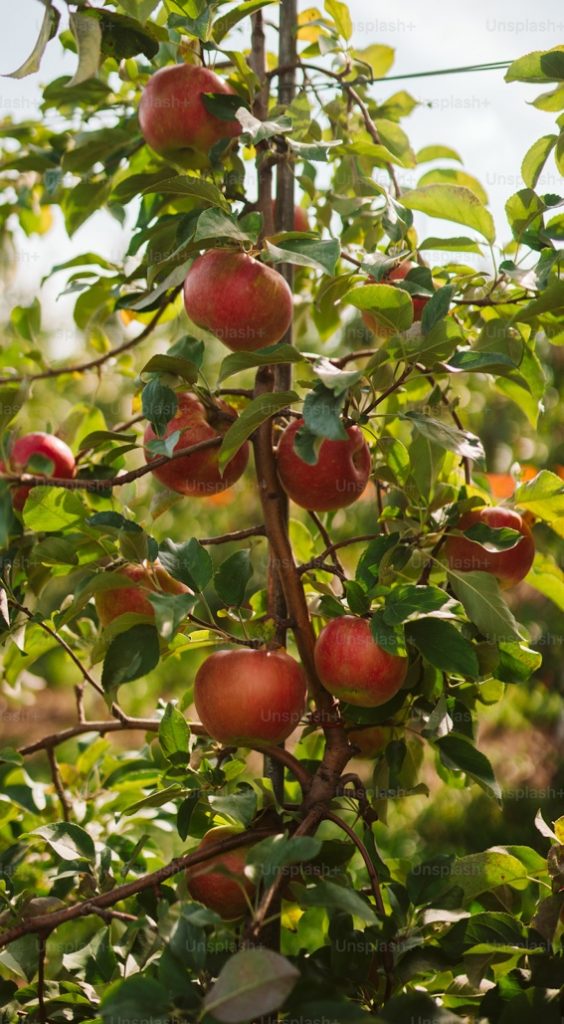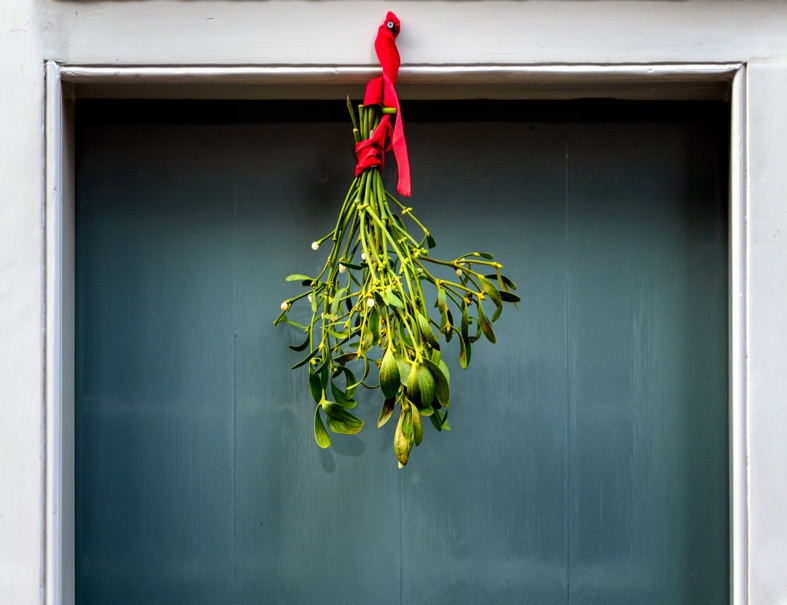By Jen Munroe, OSU Hood River Extension Central Gorge Master Gardener volunteer

Apple tree, Jason Hawke
As we come into December, we often turn to the holidays, which conjure for many people notions of coming together with loved ones and friends. One might even say that this notion of community is hard-wired into what we think of as the “holiday spirit.” But did you ever stop to think about how the plants and botanically-oriented traditions that have become part of many holiday celebrations, past and present, are tied to bringing us together as we navigate the darker days and look to the new year?
When we think of the plants associated with holiday gatherings, those that come to mind might include poinsettias, evergreen wreaths and swags, holly and ivy, and more. Many of these plants figure into holiday decorating because of the way they bridge the seasons, sustaining the life-signaling green of the fertile season throughout the dark winter, or because of their associations with gift-giving and other symbolism.
One plant that often features in holiday gatherings, mistletoe, has a bit more of a complicated history and set of meanings and uses, though. A semi-parasitic plant, both the American (Phoradendron lavescens) and European (Viscum album) mistletoe species are poisonous to consume, but both plants have been used in traditional and modern medicine to treat a range of ailments, including cancers, headaches, seizures, and menopausal symptoms. In fact, as I know from my experience working on historical English recipes, mistletoe was frequently used to treat “fits” (a generic word for what we would associate with seizures today), like the one we find in a seventeenth-century medicinal recipe book kept by Katherine Jones, sister of the famous scientist, Robert Boyle, which I discuss here (and for which you can find the QR code below).
We are also probably familiar with the popular use of mistletoe as a plant associated with kissing. In English tradition, after each kiss, one would pluck a white berry from the sprig, and people might kiss below the mistletoe only until all of the berries were gone. Long before that association, though, mistletoe was a symbol of fertility, protection, and peace. In Scandinavian tradition, feuding parties had to put aside their differences when they came to the mistletoe, making mistletoe a plant that fostered a coming together of people, of repairing the community.
Another tradition that you may not think of as obviously botanical is wassailing, which was actively celebrated throughout history, even if it is not practiced as often in the United States today. If you are familiar with wassailing, you may think of holiday goers raising a cup of warm cider as they sing carols. This is certainly part of wassailing’s tradition. But did you know that in pagan tradition, wassailing involved members of the community bringing (and drinking) their prepared cider to the orchards where they got their fruit, then singing songs to bless the trees in hope for a productive harvest the following year? Members of the community might also sip together from a communal bowl of cider, given by the orchard owner as thanks for their support, and they would sing, dance, perhaps even bang pots and pans together to please the good spirits, ward off the evil ones, in hopes of giving the trees their best chance of producing well the next season. Sometimes, celebrants hung toast dipped in cider from the trees as well. Later, wassailing evolved to have carolers move from house to house, receiving the warm drink from the men and women who lived there to give thanks and to sustain them as they offered “good health” (which is what “wassail” means) to their communities.
While we might think of a variety of plants for decorating the inside and outside of our homes as part of our holiday ritual, then, we might also take a moment to consider how they have figured throughout history as a way to bring us together. At a time when the season offers us quiet, the darker days and an opportunity to rest, these botanical traditions also provide an opportunity to think about how plants might bring us together as a community. Perhaps this holiday season, if you hang mistletoe, it might serve as a time to put aside differences with someone and look ahead to a new year of peace together. Or, if you raise the wassail cup, it might be a reminder that we are part of a larger community that depends on one another in ways that we do not always recognize or appreciate.
For more information about these traditions and others we associate with the holidays, as well as about the medicinal uses of mistletoe, please see the QR codes included with this article. And whatever traditions you celebrate, however you round the year this December and look toward the new year, I wish our whole community peace and wassail.
Central Gorge Master Gardener volunteers provide free beginning gardening classes and continuing education to home gardeners. For research based information about specific gardening or pest questions, submit your concern online atextension.oregonstate.edu/mg/hoodriver or by phone at 541-386-3343. Home gardeners can also drop off plant or pest samples Monday – Thursday between 9 AM and 4 PM at the OSU Hood River County Extension Service, 2990 Experiment Station Drive, Hood River, OR.
The Central Gorge Master Gardener program is a division of the OSU Hood River County Extension Service. OSU Extension Service prohibits discrimination in all its programs, services, activities, and materials.

Why we kiss under a parasitic plant, Mistletoe!

Mistletoe and Holly During the Holidays

Mistletoe: Not Just For Kissing?
Mistletoe and Holly

The Surprising History of Christmas Traditions

Wassailing: Ritual and Revelry



Leave a Reply